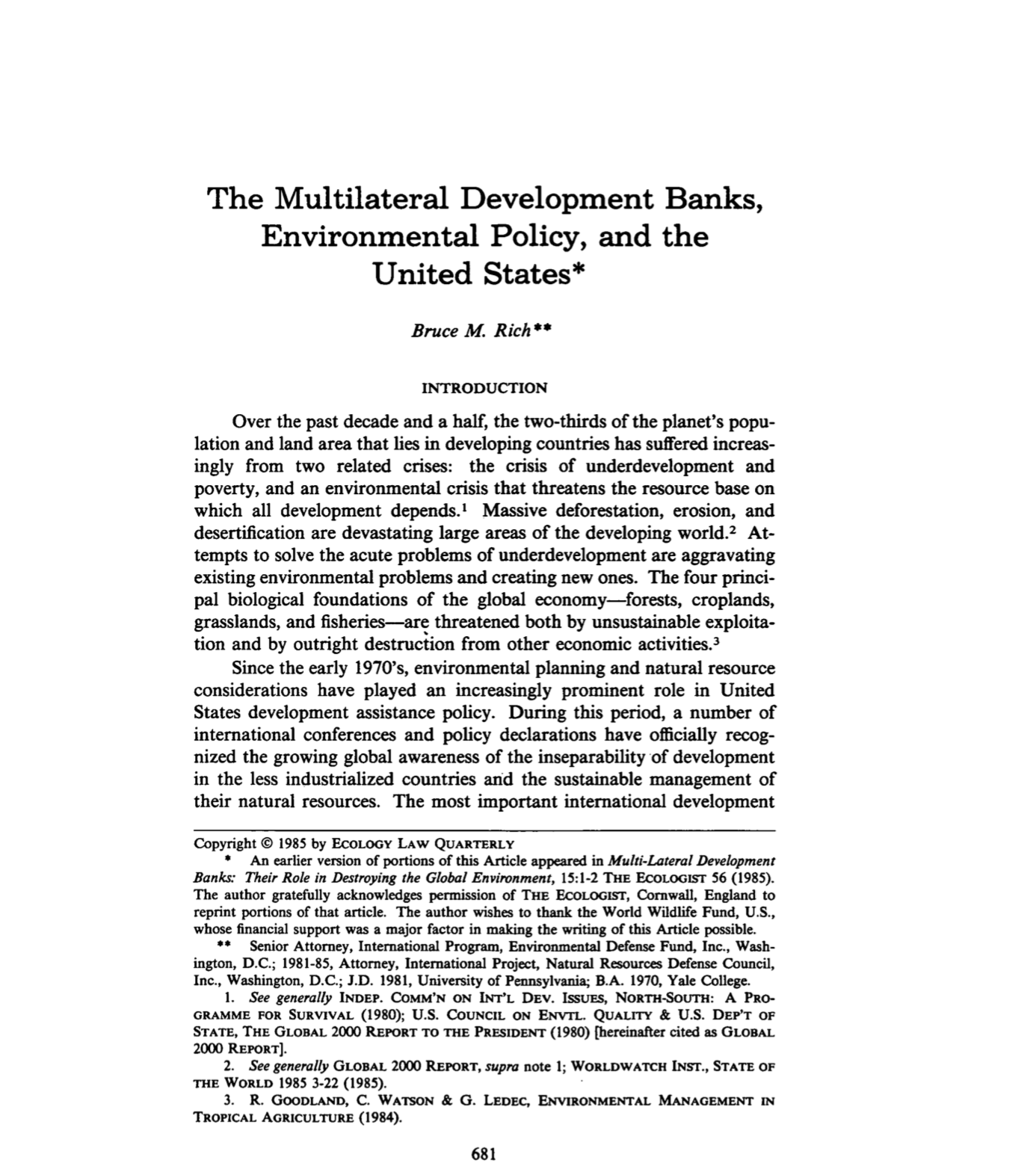- Bruce Rich
- Ecology Law Quarterly, Volume 12, Issue 4
- September, 1985
- pp. 681-745
This was the lead article in the "Special Issue: Environmental Law and Policy in Developing Countries" of the University of California, Berkeley, Boalt Hall Law School Ecology Law Quarterly. A seminal analysis, it identified the disconnect between U.S. domestic environmental legislation, and the growth of environmental rules and procedures for U.S. bilateral development assistance, and the lack of adequate environmental procedures in lending activities of the World Bank and other multilateral development banks for which the U.S. was (and still is) the largest donor. The article set out an agenda of reform for multilateral development banks, in which the U.S. Treasury and Congress in future years played a leading role. The conclusion is even more relevant today than nearly 33 years ago when it was published: "Large-scale, long-term ecological externalities ignored during the planning stage will eventually manifest themselves at the macro level....Many current multilateral bank development programs are a form of biological deficit financing that the developing world, and ultimately the donor nations and banks themselves, can ill afford."
This article examines how the United States can encourage increased attention within the multilateral development banks to sound management of the environment and natural resources. Part I outlines the structure and operation of the banks and examines the environmental significance of their activities. Part II presents recent evidence of the adverse environmental impacts of projects planned and financed by the banks. Part III discusses the growing international consensus on the need to incorporate conservation and environmental planning into development assistance, and reviews the banks' official environmental policies and procedures in light of that perceived need. Part IV addresses the role of the United States in promoting environmental management and conservation through foreign assistance policy and government influence on the banks, and Part V reviews recent encouraging initiatives taken by the United States Congress and the Executive Branch. Finally, Part VI proposes specific improvements in bank policies regarding environmental planning in the developing world....The economic cost-benefit analysis and discounted rates of return that banks use in evaluating prospective projects may be a classic instance of micro-rationality leading to macro-irrationality.... Large-scale, long-term ecological externalities ignored during the planning stage will eventually manifest themselves at the macro level....Many current multilateral bank development programs are a form of biological deficit financing that the developing world, and ultimately the donor nations and banks themselves, can ill afford.



